Being the largest and heaviest member of the deer family, moose are large herbivores that stand around 6 feet tall with huge antlers that can reach a spread of between 79 and 83 inches. These huge, towering animals are native to North America, Europe, and Asia.
In the United States, they are commonly found in northern regions such as Maine, Washington, Alaska, and throughout Canada.
As mighty as they look, you might think that moose are less likely to be hunted by other animals. But that’s not entirely true.
Moose are still vulnerable to attack from some of the apex predators in the wild. Have you ever wondered what kind of animals are the wild enemies of moose? We’ll answer that question in depth in the rest of this article.
Table of Contents
American Black Bears (Ursus americanus)

Although American black bears are native to North America and considered the most common and familiar bears, they aren’t related to brown bears or polar bears. In fact, they are the smallest North American bears compared to other members of Ursidae family.
Historically, American black bears were hunted extensively by the Natives and European settlers. But today, the United States government has enforced laws and regulations for hunters to acquire big game licenses before hunting these animals.
American black bears generally stand between 5 and 6 feet and weigh up to 600 pounds. Not all black bears have black coats. In fact, some of them come in different colors ranging from pure white to cinnamon and dark brown.
Although American black bears don’t actively seek to hunt moose, these omnivorous bears can definitely kill them, especially when they are hungry.
Grizzly Bears (Ursus arctos horribilis)
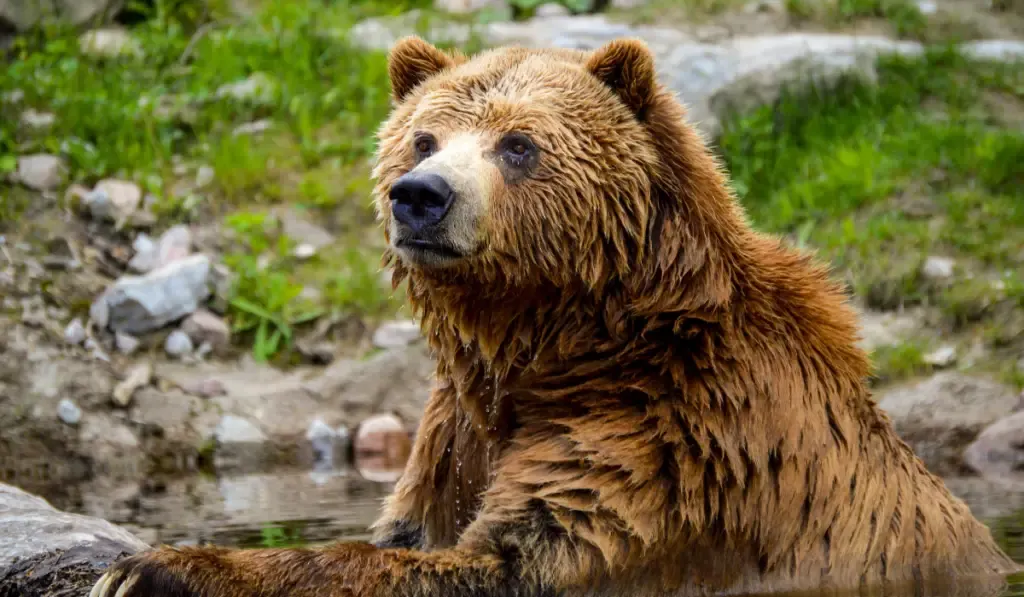
With their large, muscular bodies and limbs, grizzly bears are definitely not the type of animal that you can easily poke around. They are also known as the North American brown bears and can commonly be found from California to the North Plains, Mexico, and all the way to Alaska. Some of these brown bears can also be found in Russia, Scandinavia, Asia, and Europe.
Originally, there were five subspecies of grizzlies but only two managed to survive until today, which are the Kodiak bears and the peninsular grizzlies.
Grizzly bears generally stand between 5 and 8 feet on their hind legs and could weigh up to 800 pounds. Their coats come in different colors ranging from light tan to dark brown.
Aside from being intelligent and strong, these bears have a sharp sense of smell and are able to detect their prey from afar. Size-wise, grizzly bears are slightly taller than moose. Hence, there is no reason why they can’t hunt moose whenever they sense these herbivores are nearby.
Wolves (Canis lupus)
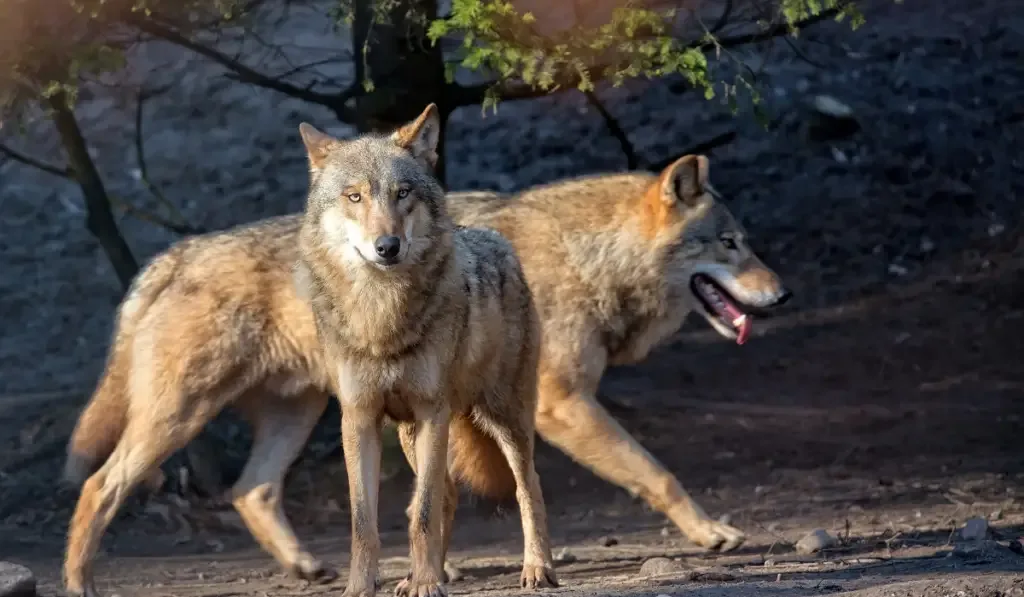
As we already know, wolves are apex predators with sharp senses of smell, sight, and hearing. These vicious canines were also historically used by the United States government to control the population of moose. Some subspecies were selected to be bred with domestic dogs.
One of the common wolves found in the United States, Canada, Alaska, Mexico, and even Eurasia is the gray wolf. Also known as timber wolves, these canines can be characterized by their gray-brown coats, long and black-tipped bushy tails, with buff markings on their face and undersides.
They generally measure between 3 and 5 feet long with a weight between 60 and 100 pounds.
Although wolves are much smaller than moose, when they move in packs they are powerful enough to hunt and take down these large grazers.
In fact, wolves are intelligent animals. When they are on the hunt, they will target weaker or younger moose that are weaker and more vulnerable to be ambushed.
Cougars (Puma concolor)

Also known as the mountain lions or pumas, these large felines are native to the Americas, especially in the western hemispheres. They are the second-largest cats in the world.
Cougars stand between 25 and 30 inches tall at the shoulder and weigh around 150 pounds. When they rear onto their hind legs, they can be between 5 and 9 feet tall.
One of their subspecies known as Florida panthers can be found exclusively in southern Florida’s swamps.
Cougars can be recognized by their rounded heads, slender bodies, pointed ears, tawny coats with lighter undersides, and black-tipped tails. Being solitary animals, cougars will hunt for their prey stealthily. They will hide and wait for the best moment to pounce and make a kill.
If they manage to kill a large animal such as moose, the carcasses are hidden and stored in a secluded place. This way, they can go for a few days or a week without hunting.
Siberian Tigers (Panthera tigris altaica)

Considered as the largest cats in the world, Siberian tigers can commonly be found in the Russian Far East, North Korea, eastern Mongolia, and Northeast China. They also go by the name “Amur Tiger,” which relates to the Amur River located in one of their native habitats in Russia.
These large tigers stand between 10 and 11 feet fully upright on their back legs and weigh up to 660 pounds.
Siberian tigers can be distinguished by their long and thick light orange coats with black stripes scattered all across their bodies. They have strong legs, sturdy figures, and thick manes around their neck.
Like other solitary predators, these tigers hunt their prey by stalking before making an ambush.
Aside from moose, Siberian tigers can also take down other large animals including sika deer, roe deer, wild boars, and occasionally, bears. Once they kill their prey, the carcasses will be dragged into a secluded area to be devoured over time.
Coyotes (Canis latrans)
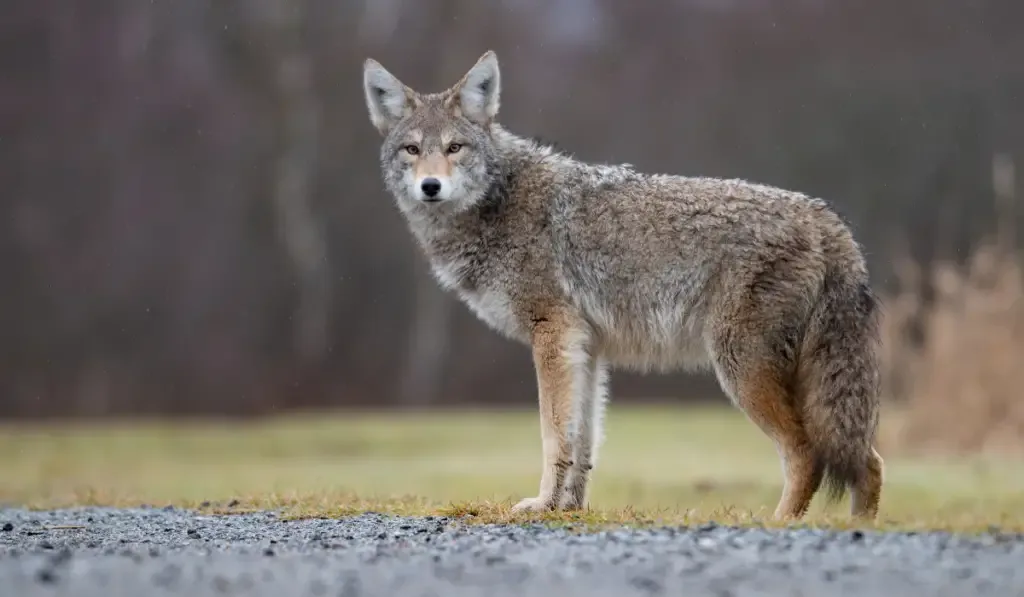
These medium-sized canines might resemble huggable German shepherds but they certainly don’t behave like them. In fact, they can become quite aggressive when they move in a pack.
Coyotes are also known as brush wolves or prairie wolves. They are closely related to wolves and foxes and can be found in many regions in North America.
Standing between 32 and 37 inches at the shoulder and weighing up to 50 pounds, they are slightly smaller than gray wolves.
Coyotes generally have different coat colors based on where they live. These include whitish gray, light gray, red, black and gray, sable, and dark neonatal. In the wild, coyotes are carnivores that feed on different prey ranging from small to large animals.
They are opportunistic feeders that frequently hunt at night and are considered destructive pests by many farmers and livestock breeders.
Killer Whales/Orcas (Orcinus orca)
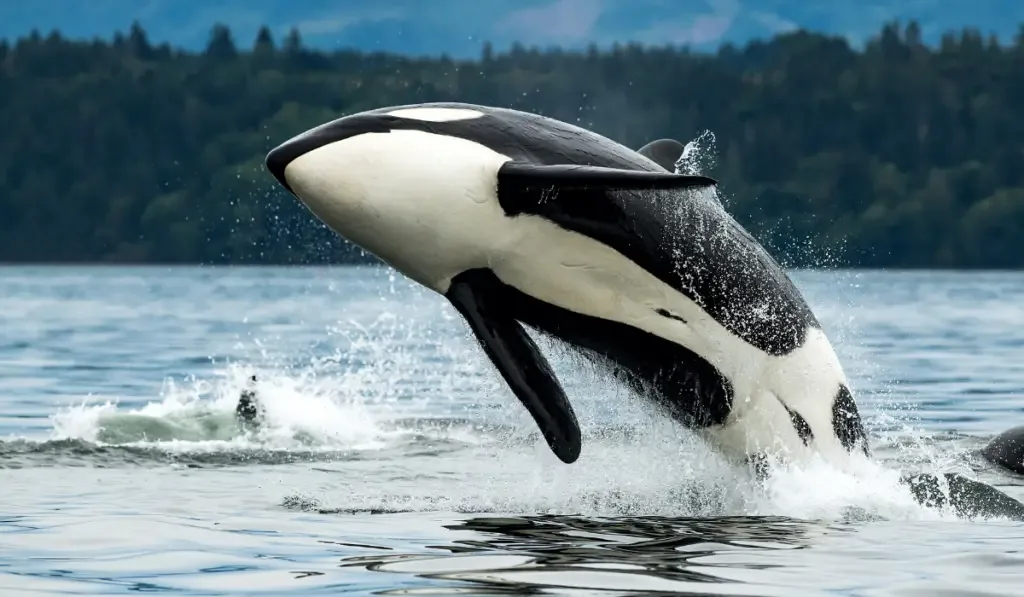
Although the attacks are not as frequent as what happens with ground predators, killer whales are definitely one of the wild enemies of moose.
Also known as orcas, these toothed whales are the largest member of the dolphin family. They are one of the world’s most powerful marine predators with distinctive black-and-white bodies. Orcas can reach a size of 80 feet long and weigh up to 6 tons.
Though they swim in most oceans, these mammals frequent cold waters such as Arctic and Antarctic regions, and occasionally, tropical seas. But they can also be found in North America, Canada, Alaska, and in the forests of the Northern Hemisphere.
Sightings of orca attacks on moose usually happen off the coast of Canada and Alaska. Moose carcasses have repeatedly been found off the coast of Vancouver, Canada.
It is no surprise that once moose are caught in killer whales’ bites, they will have a really hard time escaping the strong grip. All orcas have to do once they catch a moose is to drag them down into the water to let them drown and tear their flesh to pieces.
Wolverines (Gulo gulo)
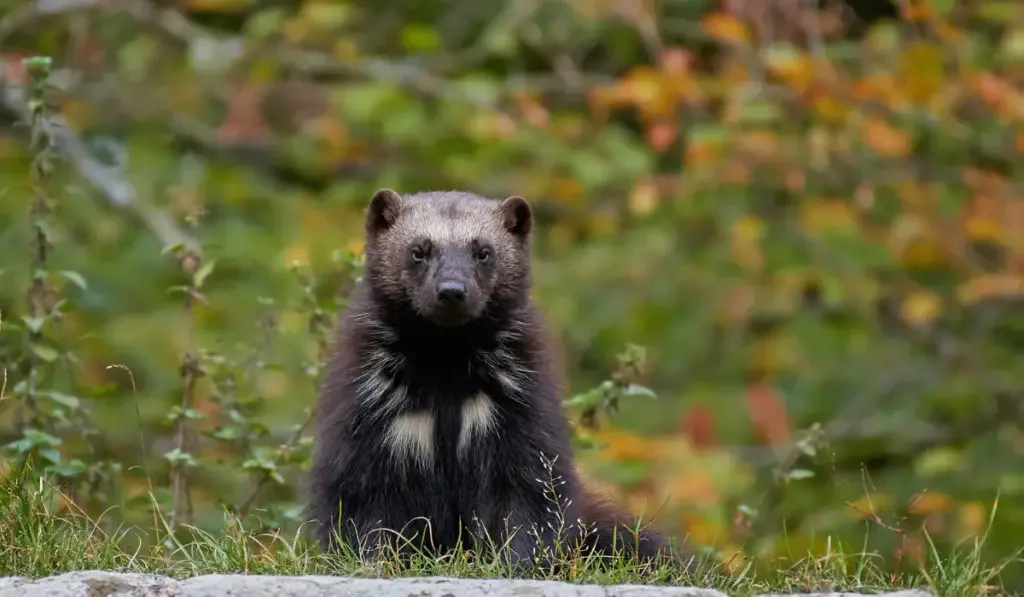
Also known as skunk bears, wolverines can be found primarily in North America, Alaska, northern Canada, Siberia, and Scandinavian regions. They are closely related to beavers, minks, otters, and weasels.
Being the largest member of the weasel family, they generally measure between 16 and 18 inches long and weigh between 20 and 66 pounds.
There are two subspecies of wolverines that are similar to one another, which are the Eurasian and the American. Although they are much smaller than other predators, wolverines are aggressive carnivores that can take down moose when they are truly hungry.
Aside from being agile and fast, they have a strong bite, and sharp semi-retractible claws that can pierce through the flesh of their prey. Wolverines frequently prey on weaker moose that are easy to take down.
Humans
Last but not least, hunters are also a threat to moose. In fact, these herbivores are a popular game animal killed for trophies. Their heads are often taken, preserved, and mounted on the walls as decorations. Some hunters will also turn a moose’s skin into rags and exotic collector items.
In certain parts of North America and Canada, moose hunting is considered a way to control their population. However, there is still some controversy surrounding this method due to the overhunting activities that can drastically reduce their population.
Final Thoughts
With the exception of killer whales, all of these ground predators are aggressive carnivores that rank higher on the natural cycle of the food chain.
The single biggest weakness that makes moose vulnerable to predatory attack is their solitary behavior. Unlike other herbivores, they don’t move in a herd.
Hence, predators that attack in groups or packs can certainly take down these mighty grazers.
Citations
- https://www.quora.com/What-are-the-mooses-natural-predators
- https://www.quora.com/What-is-the-prey-and-predator-of-a-moose
- http://www.whateats.com/what-eats-a-moose
- https://naturenoon.com/orcas-natural-predator-of-mooses/
- https://www.eatingthewild.com/natural-predators-moose/
- https://factsking.com/animal-facts/predators-of-moose/
- https://www.nwf.org/Educational-Resources/Wildlife-Guide/Mammals/black-bear
- https://animalfactguide.com/animal-facts/grizzly-bear/
- https://animaldiversity.org/accounts/Canis_lupus/
- https://animalfactguide.com/animal-facts/cougar/
- https://uk.whales.org/whales-dolphins/facts-about-orcas/
- https://conservewildcats.org/resources/amur-tiger-facts/
- https://thewebsiteofeverything.com/animals/mammals/Carnivora/Mustelidae/Gulo/Gulo-gulo.html
- https://www.nationalgeographic.com/animals/mammals/facts/coyote
